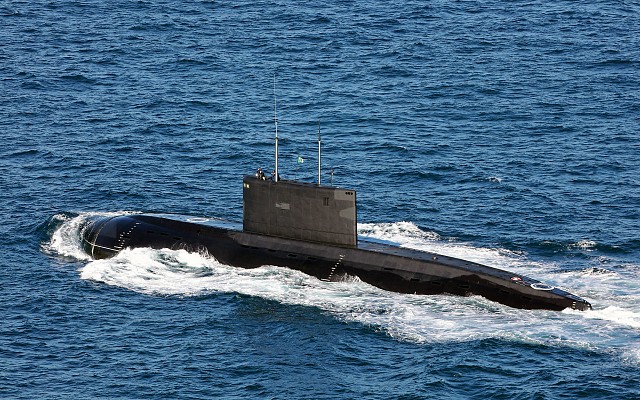Project 636 Varshavyanka class
NATO: Improved Kilo class
Overview
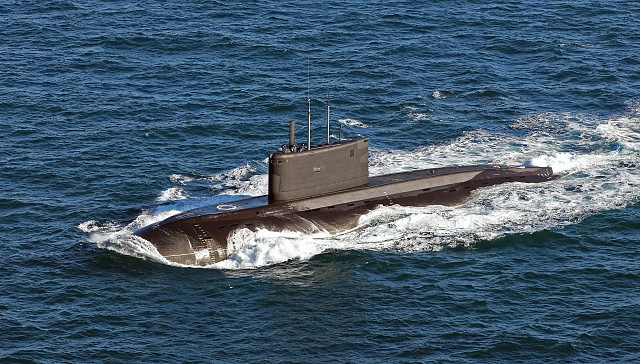
Project 636.3 class
Russian navy Project 636 Varshavyanka (NATO: Improved Kilo) class crossing the English channel.
Source: UK MOD -
© Open Government License
Russia - Rubin central design bureau
Main producer
Russia - Sevmash, Severodvinsk
2 ships
Russia - Krasnye Sormovo, Nizhny Novgorod
1 ship
10 Project 636M
8+2 Project 636.1
7+5 Project 636.3
Varshavyanka
Russian for "Warsaw"
Description
Introduction
Project 636 Varshavyanka is a class of diesel-electric attack submarines of Russian origin. In the West these ships are known as the "Improved Kilo class". The name Varshavyanka refers to the Warsaw pact. This class was initially developed for export to Warsaw Pact nations. After the fall of the Soviet Union the final stages of the development were financed by China, which is the major export customer for this class.
Layout
Project 636 is a further development of the earlier Project 877 Paltus class. The Project 636 features a longer pressurized hull, an automated targeting system, improved noise reduction and more powerful diesel engines.
Firepower
Project 636 has six 533mm torpedo tubes and up to 18 weapons can be carried. Various models of the Type 53 torpedo can be launched, including wire guided torpedoes such as TEST-71 and USET-80. Most Project 636 have the ability to launch Klub-S cruise missiles. The Russian Project 636.3 can launch the domestic Kalibr-PL variant. Instead of torpedoes up to 24 mines can also be carried. In Russian service a MANPADS system is carried.
Mobility
Project 636 is fitted with two diesel engines that charge the batteries and provide propulsion when surfaced or using the snorkel. When submerged below snorting depth an electrical motor is used. A single fixed pitch propeller provides propulsion. The maximum speed is 12 knots surfaced and 18 to 20 knots submerged. The maximum depth is 300 m, although for safety reasons a maximum of 240 m is maintained during regular operations.
Users
The main export client for the Project 636 is China, which acquired 10 ships. Algeria and Vietnam also acquired Project 636. Due to issues with the development of Project 677 Lada, Russia ordered six Project 636 for domestic use. This number was later doubled to 12 ships.
Details
Media
Subcomponents
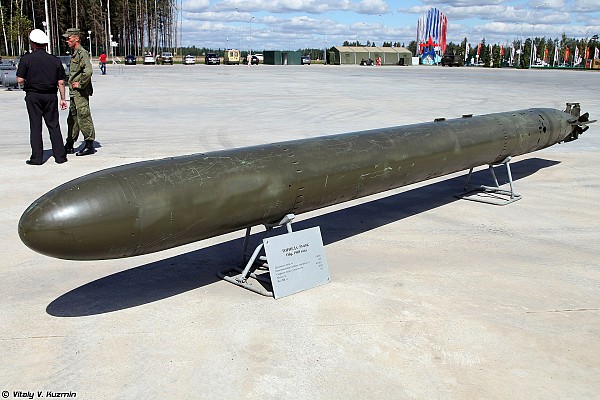
Type 53-65
Standard wake homing heavyweight torpedo for use against surface vessels.
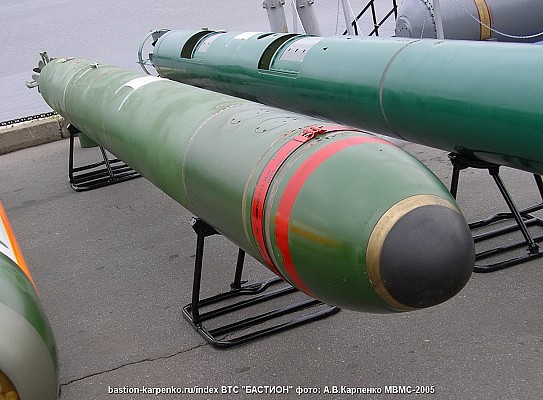
TEST-71
Wire guided heavyweight torpedo for use against submarines and surface vessels.
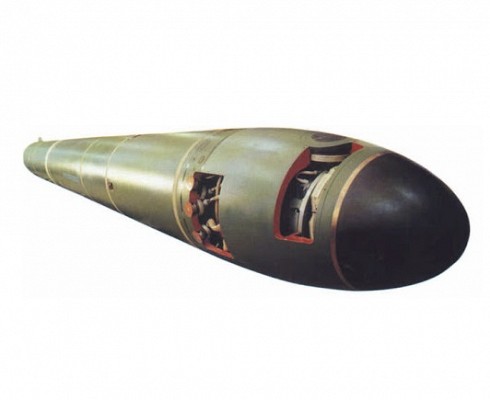
USET-80
Universal heavyweight torpedo for use against submarines and surface vessels.
Related articles
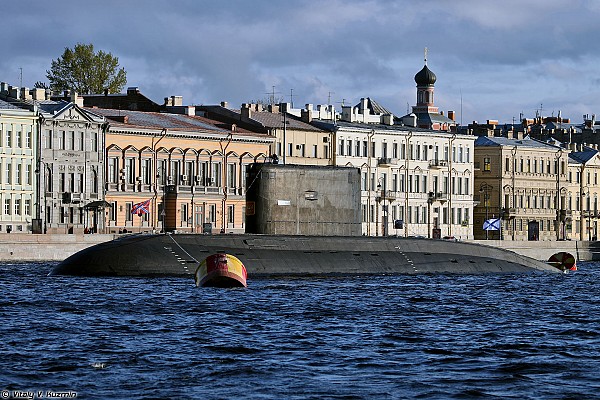
Project 877 Paltus class
Project 636 Varshavyanka is a modernized development of the Project 877 Paltus class of diesel-electric submarines. Project 636 and 877 are externally very similar.

